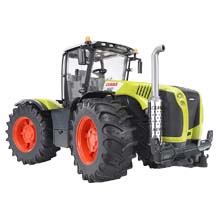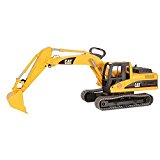Camera drone purchasing advice: how to choose the right product
- What You Need to Know
- Camera drones are unmanned aerial vehicles with an integrated camera that allow the pilot to take pictures and videos from a bird’s eye view.
- The majority of camera drones for private use are quadrocopters with four rotors.
- With a navigation system, for example based on GPS, the camera drone stays in one place even in strong winds. Constant counter-steering is not necessary.
- A mechanical image stabilisation via gimbal ensures jerk-free recordings.
- Observe the rules and regulations for flying drones.
Up in the air
For a long time, it was difficult for private individuals to take pictures from a bird’s eye view. After all, amateur photographers had to climb mountains themselves or head for other high places, which severely limited the possibilities and the choice of motifs. Ambitious photographers therefore went to great lengths to get the perfect picture. Videos from this perspective are almost impossible as a private person.
In the meantime, photographers and videographers can get support with a drone: What was originally reserved for the military and research is now also affordable for the average consumer. Camera drones are particularly interesting for anyone who wants to take spectacular aerial photos.
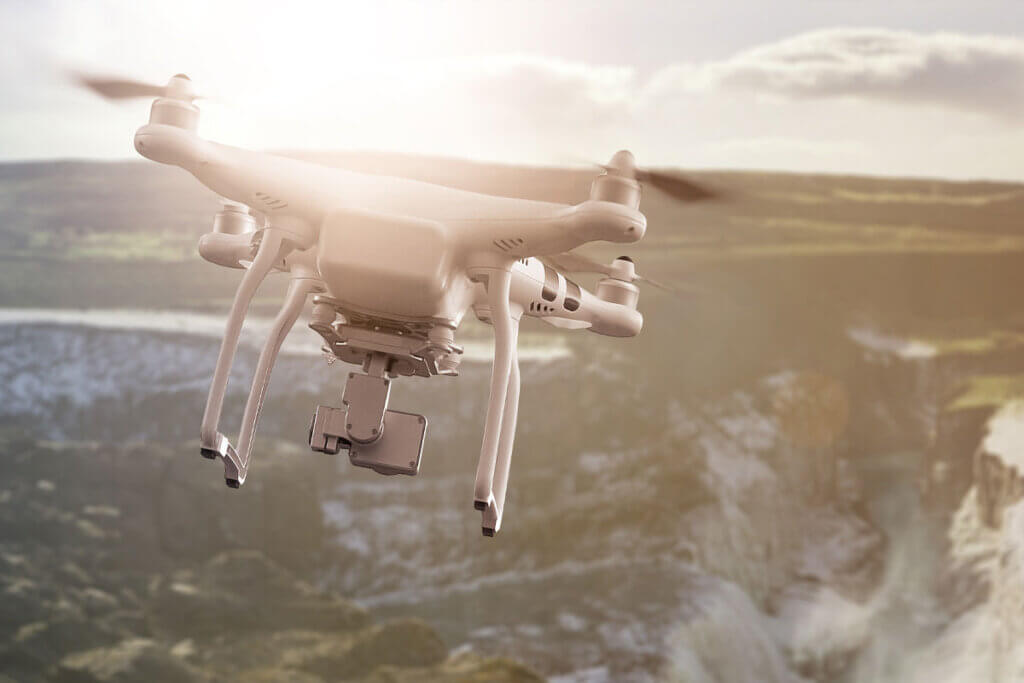
Camera drones are, as the name suggests, drones with a built-in or mounted camera. Drones are small unmanned flying objects with multiple rotors that can be operated from the ground with the appropriate remote control. Drones are not only used by the military and in science, but also in many other areas:
- Technical control
- Surveying
- Forestry and agriculture
- Hunting
- Nature conservation
- Police investigations
- Recreation
In principle, the intended use determines which features the drone requires. The focus here is exclusively on camera drones, often also called “photo” or “video” drones.
How does a camera drone work?
A camera drone has four to eight propellers and an electric motor that drives them. Each propeller can be controlled differently, which enables different flight manoeuvres. The built-in control unit converts the signals from the remote control into commands. The signal range varies depending on the model. With the help of an integrated screen or a holder for smartphone and tablet, the pilot can see the footage in real time and thus move the camera drone precisely. Since the drone could not fly if it weighed too much, it is made of lightweight materials such as plastic, carbon or aluminium.
Advantages and disadvantages of a camera drone
High-quality aerial photography that would otherwise be difficult to achieve becomes possible with a camera drone. For this, however, the camera must be of a correspondingly high quality. Professional models have the best equipment, but they are expensive. Prices over 1,000 euros are standard here.
If you are interested in a camera drone, you can choose from a large number of different models with four, six and eight propellers as well as different price ranges. Due to their low weight, they are particularly manoeuvrable, which, together with the precise control, not only allows for artistic flight manoeuvres, but also makes it possible to take pictures in hard-to-reach places.
However, the battery that sits in the motor is quickly used up: even the most expensive models only manage to stay in the air for about half an hour. With many camera drones, it doesn’t even take twenty minutes before the battery has to go to the charging station.
Pro points
- Agile and manoeuvrable
- Aerial photography possible
- Precise control
- Wide range of models
Drawbacks
- Limited flight time
- Varying camera quality
- Professional models are expensive
These are the models to choose from
Camera drones predominantly have four, six or eight propellers, which puts them in the multicopter category. Multicopters describe all drones with at least two rotors, all positioned on one plane. Helicopters do not belong to this group because their second rotor is on another plane and works in a different direction.
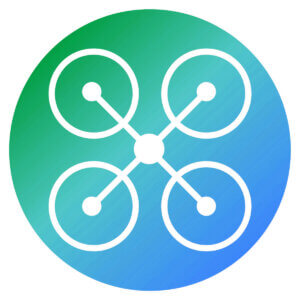
Quadrocopter
Quadrocopters have become the standard for camera drones: they are available in every price range and are well suited for beginners due to their easy handling. This type of construction scores with a handy size and has good flight characteristics. The four rotors are mainly aligned in an X or Plus shape, but there are also H-shaped models. Most models have a built-in camera, but you can also buy and install a suitable camera for quadrocopters without a camera.
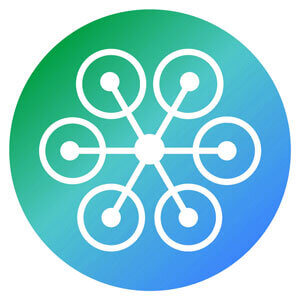
Hexacopter
Hexacopters are multicopters with six rotors arranged in a star shape. They tend to be larger than quadrocopters and are equipped with a more powerful motor. This allows hexacopters to carry heavy loads such as larger cameras or additional sensors. The flight is quiet and less sensitive to strong winds than variants with fewer propellers. In addition, this design is safer than quadrocopters, as the drone is still functional in the event that a rotor fails. This prevents severe damage from crashes.
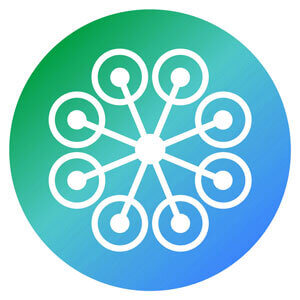
Octocopter
Octocopters are the largest drones for private use. Their eight rotors allow them to transport heavy objects. Professional camera equipment can be transported without any problems and enables photo and video recordings in outstanding quality. As with a hexacopter, the failure of one rotor does not lead to a crash. The flight characteristics are also the best: the devices fly smoothly and are stable as well as durable. However, these drones have a hefty price tag and are more suitable for those who are already good with drones.
What to look for when buying
Camera drones are designed to take photos and videos from the air. For this reason, when buying your ideal camera drone, you should not only look at the features of the drone, but also the features of the camera. Without a good-quality camera, the multicopter can shine with flying characteristics no matter how good they are, but high-quality pictures and recordings will still not succeed.
Well-known brands
Conrad | DJI | GoPro | Hubsan | Jamara | Parrot | Revell | Xiaomi | Yuneec
General features of the drone
When buying a camera drone, the most important thing is the flight time. A drone that has to land after just a few minutes because the battery is empty is completely unsuitable for videos. There is also very little time for good photos. According to the manufacturer, high-quality camera drones manage to stay in the air for about half an hour.
For those who just want to take a few fun pictures with the camera drone or need it for some holiday pictures, a few minutes might be enough. However, those who want to take semi-professional photos and shoot videos should choose a model with the longest possible flight time. In addition, the actual flight time is often less than the manufacturer’s specifications.
The range of a drone is usually higher than it would need to be in Germany, as drones are not allowed to leave your sight. A high maximum range – more than 1,000 metres is not uncommon for higher-priced drones – is nevertheless important. The higher the range between camera drone and remote control, the more stable the signal. Interference is less likely to occur.
Compact and light or large and heavy
The size of the camera drone is important on the one hand if you want to transport the device, and on the other hand if you want to attach heavier objects to it. Particularly compact quadrocopters are also called mini drones. Professional models such as the DJI Mavic Mini are hardly less powerful than their larger siblings and are therefore excellent entry-level drones that fit easily into your luggage. An alternative are foldable drones, the number of which is steadily increasing. Current professional drones from the manufacturer DJI, such as the Mavic Air 2, belong to this category, for example.
To transport heavy objects such as SLR or video cameras, a quadrocopter is not enough. Large hexa- or octocopters are the better choice for this. They are therefore often used in the professional sector such as cinema production.
When it comes to the weight of camera drones, however, you should observe the legal regulations. For hexa- and octocopters, a drone licence is required due to the high weight, while a licence is sufficient for most quadrocopters on the market.
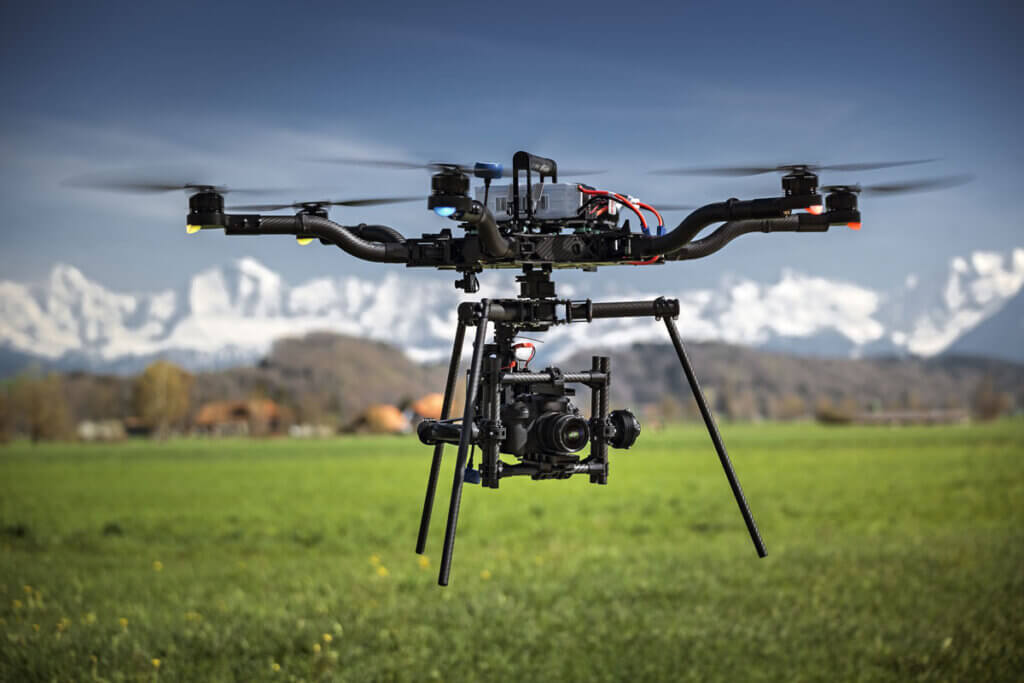
Are camera drones ready for immediate use?
Camera drones that you can take off immediately after unpacking are marked with the abbreviation “RTF”, which stands for “Ready to fly”. A camera drone marked “ARF” is almost ready to fly. With ARF drones, only a small amount of work is required before the model can take to the skies. Enthusiastic hobbyists can build their own drone, either as a complete self-build or with the help of a drone kit. Kits are good for beginners because they contain all the necessary components as well as instructions on how the components fit together. This way, the homemade drone is quickly ready for use.
What matters when taking pictures
Camera drones with a resolution lower than Full HD are cheap, but no longer up to date. Current display devices have a resolution of at least 1,920 × 1,080 pixels; with lower-resolution footage, the display quality falls well short of its capabilities. If you need more detail and sharpness, you can buy a model with a 4K camera. However, slow-motion recordings are currently only possible in Full HD.
Many high-quality camera drones come with an “active pixel sensor” that has between 12 and 20 megapixels. Another name is simply CMOS sensor. Within this sensor chip, other functions such as exposure or contrast control can be integrated. A CMOS-based sensor therefore improves the quality of the images. In addition, the camera sensor should be as large as possible: The larger it is, the more light it captures. This is an advantage especially in less than optimal lighting conditions.
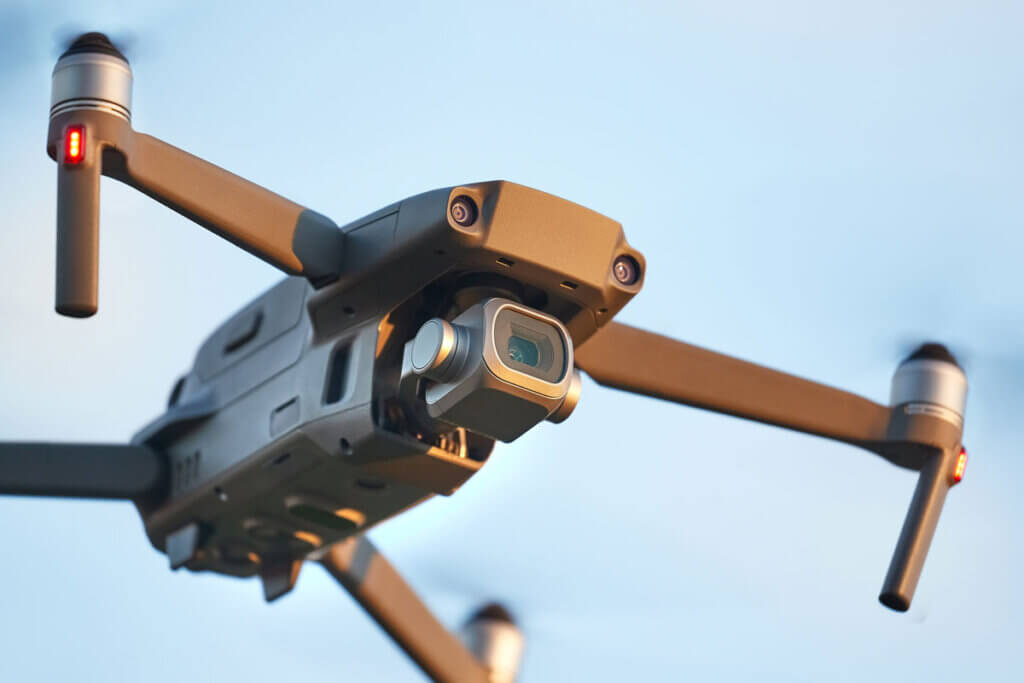
If you want to post-process your photos, you should make sure that you can save them in RAW format. The images are far richer in contrast and detail than in the downsampled JPEG format. In addition, RAW images are indispensable for photographers.
For video recordings, the frame rate and the bit rate are important. The frame rate describes the number of frames per second in “frames per second”, or fps for short. Common rates include 24, 25, 30, 50, 60 or 120 fps. Some models, such as the DJI Mavic Air, support multiple frame rates, allowing you to find the right setting for each project. 24 fps is too slow for good videos in practice and therefore not recommended. For fast, smooth videos, you should choose a device with at least 30 fps.
The colour depth indicates how many different colour gradations the camera sensor can process for each pixel. The higher the value, the more colour information the recorded video material contains. Common colour depths are eight, ten and twelve bits.
Image stabilisation
One of the key difficulties in recording with a camera drone is image stabilisation. After all, the drone moves continuously and around all flight axes. Images without stabilisation are blurred by the flight movements. That is why manufacturers integrate various image stabilisation techniques, of which the most effective form is the gimbal.
A gimbal is a gimbal suspension for objects that separates the movements of the environment from the camera. The principle is also used, for example, in the compass of a ship, which thus remains stable despite the movement of the waves. In a camera drone, a gimbal stabilises the image against the movements and jerks of the drone. For this purpose, the camera gimbal is suspended from fast electric motors and equipped with a sensor package that measures the position and acceleration of the camera in real time. With this sensor and position data, the gimbal system holds the camera in position.
Camera drones with three-axis gimbals achieve the best shots because they stabilise the camera from all sides. Models with two-axis gimbals only hold the camera in position with two axes in a mechanical way, although some manufacturers also stabilise the third axis electronically. How well this method works with a third electrically stabilised axis depends on the manufacturer. In this case, tests and comparisons online can provide information. In general, however, you will never achieve the image quality with a two-axis gimbal that a three-axis gimbal can produce.
Why is the FPV function important?
FPV is the abbreviation for “First Person View”. A camera drone with this function allows the user to observe the live image of the drone on the display of the remote control or smartphone. This allows the photographer or videographer to select the subjects precisely and determine the optimal positioning. Even as a beginner, you can create beautiful photos and videos with the help of this feature. Without FPV, you only find out afterwards whether you have captured what you wanted at all.
What the camera drone controls look like
Camera drones can be steered either with a remote control, which is reminiscent of a game console controller, or via smartphone. In addition to flight speed, altitude and direction, you also use it to control the camera’s tilt angle, brightness and the creation of photos and videos.
However, the remote control of a drone with FPV function does not always have an integrated screen with which you can see the live recordings. Combined control with smartphone and remote control is therefore not unusual: you steer the drone with the remote control and see the camera transmission on the smartphone screen. To do this, you insert the smartphone into the slot provided on the remote control and connect the cable. It is often also possible to purchase a remote control.
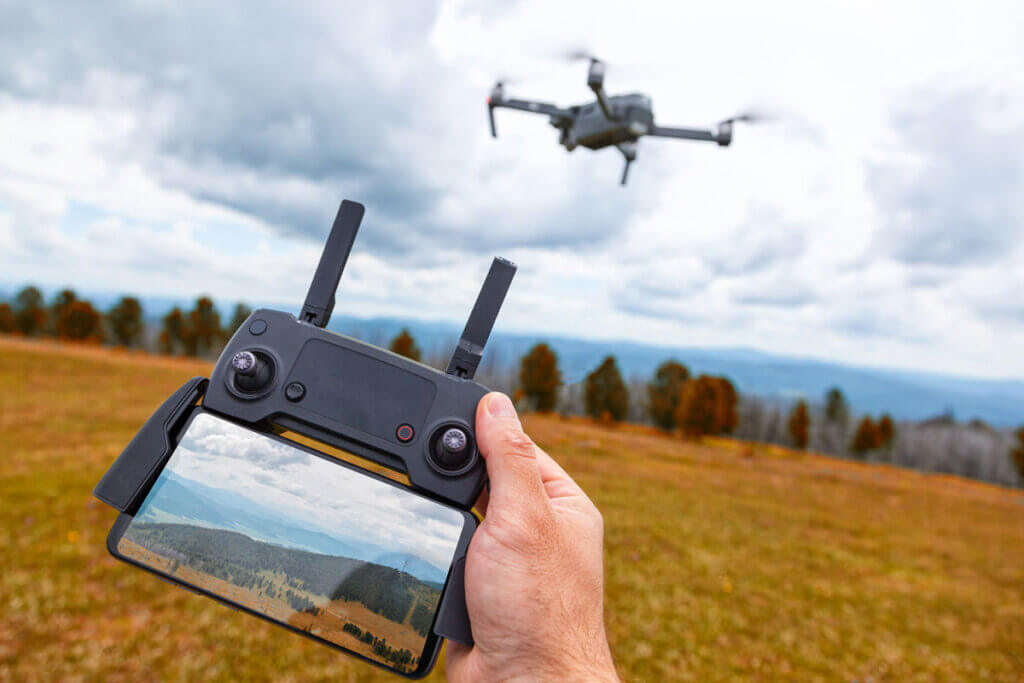
The core of the operation is an app of the respective manufacturer. It contains all the picture parameters as well as various additional functions.
These functions facilitate operation
A well-functioning navigation system is the be-all and end-all of a stable stand in the air: despite strong winds, the camera drone remains in position. Otherwise, you have to continuously steer the model, which makes it much more difficult to take beautiful pictures. In addition, a functioning system, for example based on GPS, enables various automatic flight modes. The most important mode is “Return to Home”, sometimes also called “Coming Home”. With this, the drone returns to the pilot without being asked in the event of a connection loss or when the battery is almost exhausted. The type and number of functions vary from model to model. Possible modes include:
- Follow Me, with which the drone tracks objects or people.
- Orbit or Point of Interest, whereby the device circles objects or people
- Headless, in which the pilot controls only by lever, regardless of the device’s attitude.
- Waypoint, which allows the model to fly around set waypoints in sequence
- Terrain-Follow for steady flights at a certain height above the ground
- Looping to perform rolls
If the camera drone has active obstacle detection with collision protection, it avoids obstacles independently. For this purpose, the device is equipped with sensors in the front area, sometimes on all sides in the case of high-quality models. The Mavic 2 Zoom from DJI, for example, has ten obstacle sensors. Active obstacle detection is particularly suitable for beginners, as they do not have to constantly watch out for the drone colliding with an object. In addition, beginners may need a few flights until they have internalised the handling and can take abrupt evasive action.
Useful accessories
Perhaps the most important accessory for camera drones is a fast memory card. Camera drones with 4K resolution and high frame rates generate large amounts of data that the memory card must process. Without sufficient capacity and write rate, the recordings suffer from image errors or interruptions. A 32-gigabyte memory card is already sufficient for photos. Videos – in 4K and Full HD – on the other hand, generate much larger amounts of data than images, so a larger version is needed. The Mavic Air 2, for example, supports memory cards with up to 256 gigabytes. If you are wavering between two capacities, you should go for the larger memory card, as the prices are now low.
If you want to shoot photos or videos over a longer period of time, you are well served with at least two to three spare batteries. When the first battery is used up, you can continue shooting without losing much time.
For high-quality aerial photographs, the consumer can make use of optical filters. If such a filter is placed in front of the drone’s camera, it ensures that the images are not overexposed when it is very bright outside. The most commonly used types are neutral density and polarisation filters, ND and PL filters for short, or a combination filter of the two. While the ND filter reduces the incident light without distorting the colour rendition, PL filters increase the contrast of the image and work against reflections on non-metallic surfaces such as water or glass. ND-PL combination filters, which combine the properties of both variants, are particularly practical.
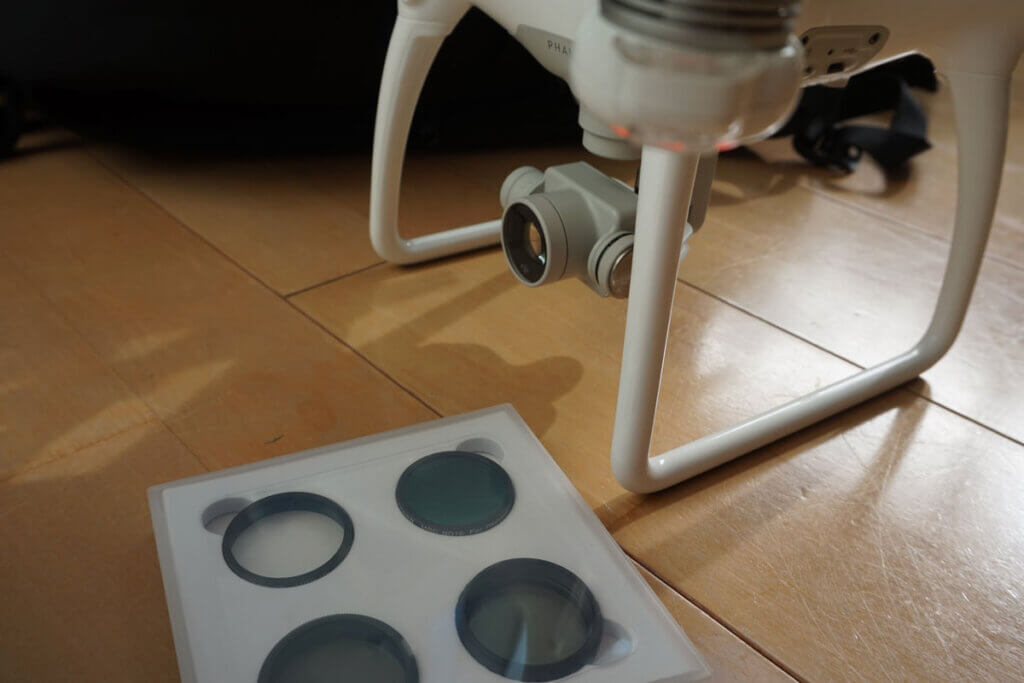
To protect the high-priced professional camera drone from damage during transport, you should have a suitable place to store it. Compact mini drones or the foldable versions can be stored almost anywhere. For larger and non-foldable versions, on the other hand, a padded bag is recommended. For this purpose, there are product-specific drone bags from the manufacturer and some from third-party suppliers, as well as universal drone bags. Alternatively, you can also use a camera backpack with a customisable interior, for example.
How much should a camera drone cost?
The price of a camera drone largely determines the quality of the shots and the handling. Inexpensive drones under a hundred euros, for example, are neither equipped with a navigation system nor with usable image stabilisation. Images and recordings are mainly in HD. Flight time and range are also much shorter. Thus, inexpensive camera drones are mainly suitable for indoor use and for anyone who wants to learn how to use a camera drone first. If you want to create high-quality images and videos in at least Full HD, you should start at prices of around 350 to 400 euros. For the price, there are good mini drones like the DJI Mavic Mini, which are ideal for taking pictures on holiday. Camera drones with excellent flight characteristics and recordings start at prices around a thousand euros. In the professional sector, several thousand euros are not uncommon.
These laws apply to drone pilots
Drones, if used for commercial purposes, fall under the category of model aircraft and unmanned aerial systems. As such, they are subject to strict regulation. Drones for purely recreational use are subject to less stringent regulations, but even there there are a few things to consider. Everything important is summarised in the Drone Ordinance from 2017. However, these rules do not apply at model flying sites, where the devices should only be marked with the name and address of the owners.
Marking, flight permit and insurance
The labelling obligation applies outside of designated airfields for drones weighing 0.25 kilograms or more. An aluminium sticker engraved with the information is suitable for this purpose. You attach this to a smooth, free surface so that nothing sticks out. The manufacturer of the DJI Mavic Air, for example, recommends the surface behind the gimbal and camera, along the edge.
If the drone weighs between two and five kilograms, you need a certificate of proficiency to operate the drone. This can be provided by a valid pilot’s licence as well as a test from a body recognised by the Luftfahrt-Bundesamt (German Federal Aviation Authority) on site or online. The minimum age for the test is 16. In addition, you can have yourself instructed by an authorised air sports association such as the DMFV or a club for model aircraft. The association will then issue a certificate of instruction confirming your acquired knowledge. This is possible from the age of 14.
From a drone weight of five kilograms, the certificate of knowledge is no longer sufficient. In addition, the state aviation authority must issue you with a permit. Furthermore, flying with a drone is subject to insurance. However, since private liability insurance does not cover unmanned flying objects, additional drone liability insurance is necessary.
Drone flight: Only on sight and not everywhere
The flight space for camera drones is also subject to some regulations. The drone may not fly higher than 100 metres and must always be within your visual range. This is between 200 and 300 metres in an open area. Binoculars, on-board cameras and other means of increasing visibility are not permitted. However, you can apply for exceptions at the national aviation authorities.
Furthermore, there are places where launching a camera drone is prohibited. These include sensitive areas such as police and rescue services. Crowds of people should also be avoided, but you are allowed to fly over individuals. You should also avoid facilities such as prisons or industrial plants, government offices and nature reserves.
In order not to hinder operations, you may not operate the camera drone in control zones of airfields. This includes the approach and departure areas of airports.
Residential properties are also included in the regulation. Drones weighing more than 0.25 kilograms or those that can receive optical, acoustic as well as radio signals may only fly over other people’s property if the owner has expressly consented to this.
Everything at a glance
All applicable rules and regulations for flying a drone, including interactive maps of permitted flight zones, can now be accessed via various apps. The German Air Traffic Control has also published such an app under the name “DFS-DrohnenApp”.
The future EU drone regulation – what will change
The EU has been working on a uniform drone regulation for years, which was originally supposed to come into force on 1 July 2020. However, the EU Commission postponed the date by six months as it did not think it would be possible to implement it at that time. Once the regulation applies, it will replace all previous German regulations.
The law then divides all drones into three categories of which the “open category” and partly the “special category” are relevant for private use. The open category is for lower-risk drones that can fly up to a maximum of 120 metres at visual range. It is divided into the risk classes C0 to C4 and the subcategories A1 to A3 and must be labelled by the manufacturer. These classes classify drones based on their weight, kinetic energy, design and safety features:
- C0: Total weight including additional parts less than 250 grams.
- C1: Total weight between 250 and 900 grams, kinetic energy less than 80 joules
- C2: Total weight up to four kilogrammes
- C3 and C4: Less than 25 kilograms take-off weight, electronic ID and GEO flight restriction monitoring required for C3
For C1 aircraft, you need to take the so-called small drone licence, which requires online training and a test. From C2, the large drone licence in the form of a test at a recognised test centre is required in addition to the small variant. C0 and C1 drones belong to the A1 subclass, which allows them to fly over people. C2 devices belong to A2 and should therefore maintain a minimum distance of 30 metres from uninvolved persons. A3 applies to C3 and C4 models and requires a distance of at least 150 metres from commercial and residential areas.
You should register models with cameras in a database, regardless of their weight. Each member state of the European Union must create a new platform for this. Drone owners then register in the country system where they reside.
The special category concerns designs that do not meet at least one of the specifications for the open category and therefore require exemptions.
By 1 January 2023, all areas are to be adapted to the new regulations. This includes, among other things, the labelling by class on the part of the manufacturers, the flight permits and the development of the database.
For this phase, the EU Commission has decided on some transitional arrangements, for example for current drones on the market that are not certified for one of the classes. These may fly within the open category with some restrictions.

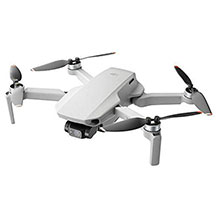
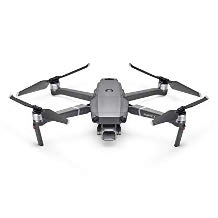






 4,009 reviews
4,009 reviews

